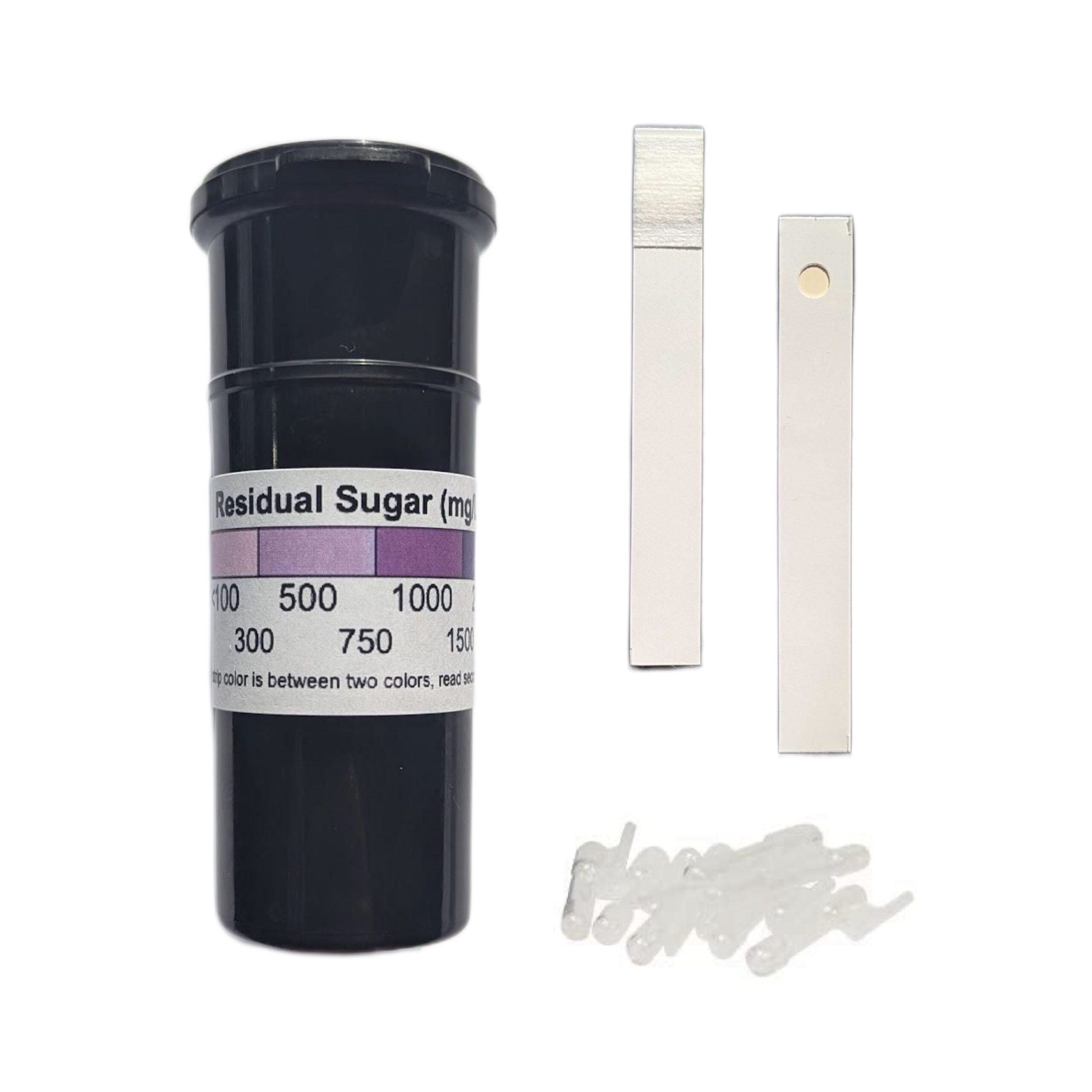Description
This test strip is intended for measuring the levels of residual yeast-fermentable sugar in fermented must and wine that can be reduced in primary fermentation. It can also be used for testing other juices and natural fermentations. It will not detect sucrose. The test range is 100-2,000 mg/L.
Residual sugar is that amount of sugar left following completion of primary (alcoholic) fermentation. The residual sugar can vary over a wide range depending primarily on desired wine style and secondarily on characteristics of the original must, e.g., level of titratable acidity. Residual sugar concentrations are important for determining the completeness of fermentation, for sensory characteristics, and for microbial stability of wine. Technically “dry table wines with no fermentable sugar” are typically defined as having a reducing sugar concentration of less than 2 g/L, although in a sensory context, the absence of perceived sweetness is achieved at concentrations below 5 g/L.
Reducing sugars in wine consist of hexoses (mainly glucose and fructose) and pentoses (mainly arabinose and xylose). The pentoses are not fermentable by wine yeasts. Since pentoses alone can vary from 0.4 to 2.0 g/L,1, 2 the best measure of the completion of primary fermentation is the determination of glucose plus fructose.
Each kit contains the number of sugar testing strips and samplers corresponding to the size of the kit for testing reducing sugars in wine.
You can learn more about the Accuvin wine tests and how they all work together here.





